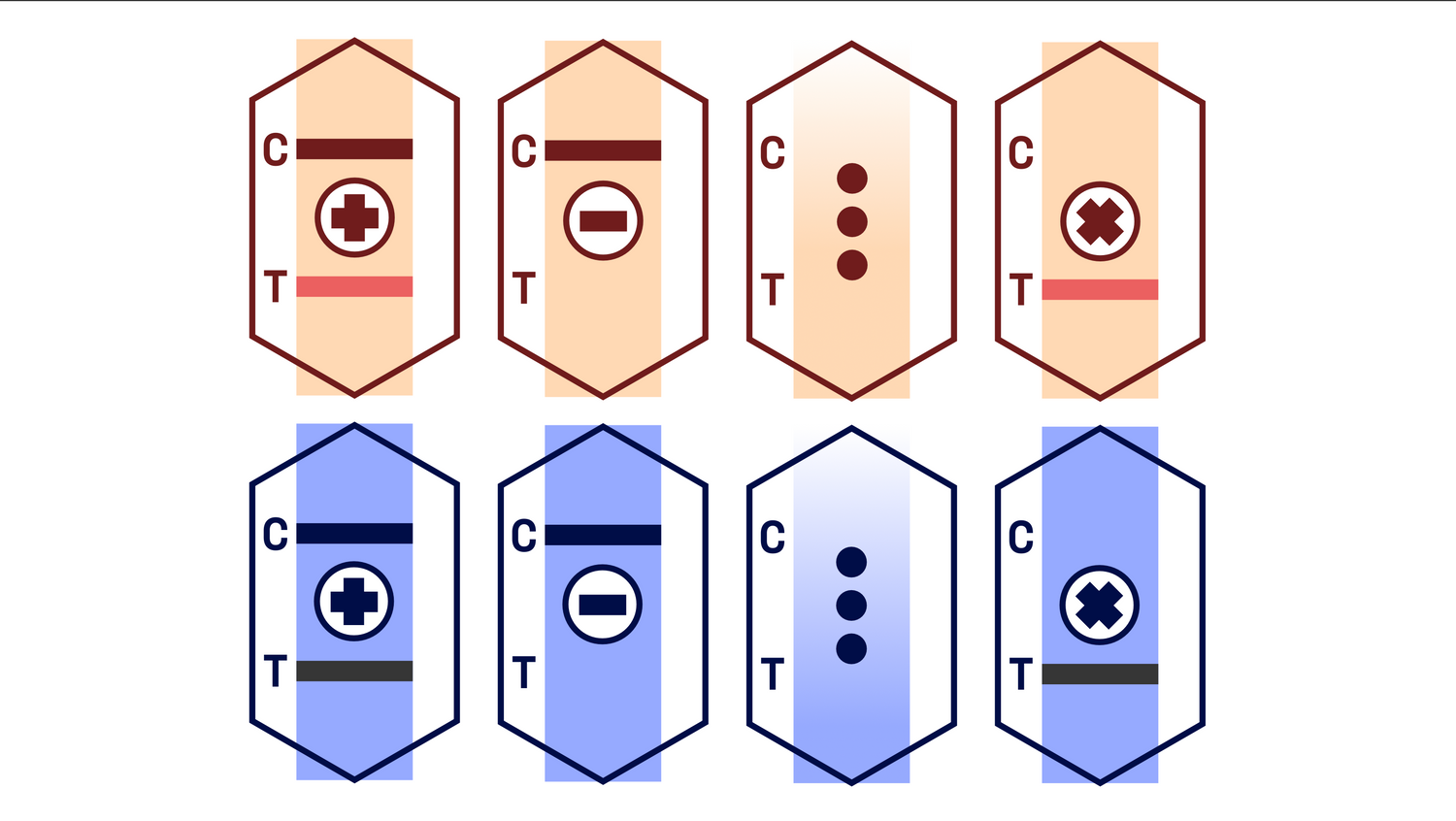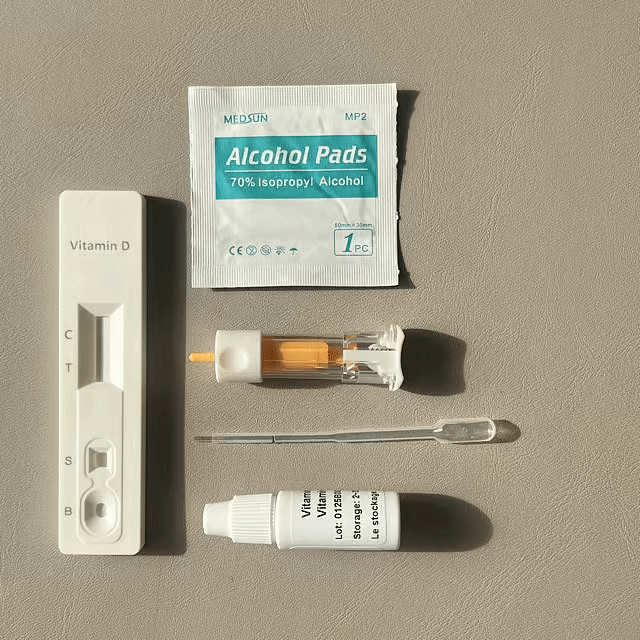
How to Test Your Vitamin D levels in 10 Minutes
-

PREPARE
Following provided instructions, clean your hands and draw a drop of blood
-

SAMPLE
Drop the buffer into the B well and your blood into the S well on the test cassette
-

COMPARE
At 10 minutes, your test is ready to read against the included reference card
All our Health Canada approved rapid tests include step-by-step instructions specific to that test in its package.
This guide is a reference, not intended to be a medical document or an approved test instruction kit.
For support, email us at info@rapidte.st

Measuring Vitamin D Levels
25(OH(D)) is a molecule in blood that represents the amount of Vitamin D circulating our body. It’s the best indicator because it changes with external conditions (sunlight, diet, supplements). By measuring the concentration from a small sample, we’re able to measure and determine sufficiency.

Step-by-Step Guide
Test your Vitamin D in 6 easy steps!
- Clean: With warm water and soap, wash your hands. Pat dry. Then, wipe the fingertip you're testing with skin-safe rubbing alcohol. Rapidte•st includes an alcohol wipe in each kit. Before you use the lancet, get ready by removing the test cassette from its packaging and opening the buffer. For your best test, wear a disposable glove on one hand, and have a bandage ready to go.
- Finger Prick: (Tricky part—be careful!) In each kit, there are two orange-and-white lancets. Lancets contain short, spring-loaded blades, which are designed to only have enough force to puncture the skin once. Screw off the smaller unit carefully, as the spring-loaded lancet can attack the wrong finger in the process. Hold the larger unit against your finger and trigger its plunger.
- Draw: With the included pipette in your free hand, hold the open nozzle end to the pearling drop of blood on your fingertip. Once enough has been drawn into the pipette, get close to your cassette. This can take a second. Don't draw it too forcefully, as the test is calibrated for fresh finger blood.
- Drop: Following test instructions, drop buffer into the bottom well (marked B). Then, using the blood in the pipette, drop blood into the sample well (marked S). Failing that, you can drop blood directly from your fingertip into the sample well. This is a great time to take a picture of your test as proof of timing.
- Wait: Rapidte•st's Vitamin D test has a 10-minute read time. Lines will most likely appear before then, but the test is calibrated for maximum accuracy at 10 minutes. Compare the result with the included colour card, which provides reference lines to interpret your result.
- Save: Finally! The test is ready to read. Take a picture before the read window expires, and share the results with your healthcare provider or use them to plan your own supplementation approach.
Vitamin D Rapid Test FAQs
What biomarker is used to evaluate someone's Vitamin D levels?
The primary biomarker used to measure Vitamin D status is 25-hydroxyvitamin D (25-OHD), which is the main circulating form of Vitamin D in the blood. Rapid tests and lab tests both look for 25-hydroxyvitamin D in blood.
Who might be Vitamin D deficient in North America?
Many people are at risk of being Vitamin deficient. Given the northerly latitudes of North America, seasonal sun angle changes mean it’s harder than you’d think to get adequate vitamin D from sunlight and diet alone, and not just in winter.
Vitamin D deficiency is most common in people with more melanin in their skin, older adults, obese people, but there are a range of genetic variants which can reduce the body’s production and usage of Vitamin D.
What are the clinical ranges for 25-hydroxyvitamin D in a blood sample?
Different jurisdictions and systems set different thresholds. Generally accepted Vitamin D level ranges are:
Deficient: <30 nmol/L (<12 ng/mL)
Insufficient: 30-50 nmol/L (12-20 ng/mL)
Sufficient: 50-75 nmol/L (20-30 ng/mL)
Optimal: 75-125 nmol/L (30-50 ng/mL)
Potentially toxic: >250 nmol/L (>100 ng/mL)
What could Vitamin D deficiency or insufficiency mean for my health?
Low Vitamin D levels may be associated with:
Bone weakness and increased fracture risk
Muscle weakness
Increased risk of falls in elderly
Impaired immune function
Mood changes
Got more questions? See our FAQs page
For more questions, visit our FAQs page or email us directly at info@rapidte.st



